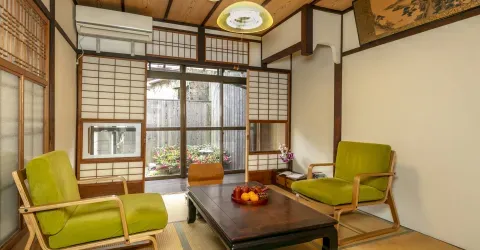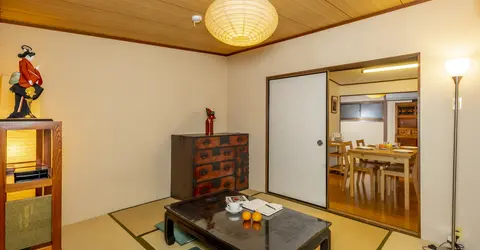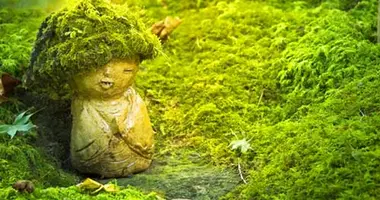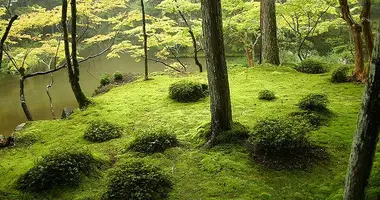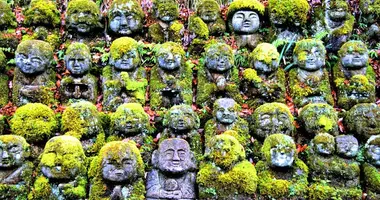Kinkaku-ji, the Golden Pavilion Kyoto
- Published on : 10/03/2020
- by : G.L.M. / J.R.
- Youtube
Places to Visit in Japan: Kinkaku-ji, Kyoto's Golden Gem
In the shadow of Kyoto's northwestern hills, sits a jewel of the ancient capital: Rokuon-ji temple, better known as Kinkakuji, or the Golden Pavilion. Discover this beautiful building and its secrets.
The Magic of Kinkaku-ji
Well hidden at the foot of the mountains of Kyoto, this famous Buddhist temple welcomes some of the largest numbers of visitors per year.
Get your sunglasses ready, this is one dazzling temple! At the door of the temple, an entry ticket, a slip of Japanese calligraphy, well worth its price, allows you entry to an immersive and poetic experience.
A tree-lined road leads you to the pond, in the middle of which stands Kinkakuji, showing off its golden exterior. Despite its small size, the majesty of the building is undeniable. Perched on this three-storey building is a phoenix, which dazzles the people coming to admire the monument.
The Architecture of Kinkaku-ji
Kinkakuji is far from the usual sobriety of Buddhist architecture. Its walls, covered with gold leaf, are perfectly reflected in the surrounding pond; which makes the place particularly photogenic in all seasons. The pavilion brings together three types of architecture: the ground floor follows the style of the palaces of the Heian period (794 - 1185), the first floor that of the houses of the samurai, finally the second floor respects the style of the Zen temples.
Along the stretch of water, the walk punctuated by pine trees leads you to the foot of the building and where you will see magnificent landscapes as the rocky islets are revealed, arranged according to the codes of Zen aesthetics. Unfortunately, it is impossible to enter the pavilion, which hides its many secrets from ordinary people. The building houses relics of Buddha.
- Read more: Zen, a school of Japanese Buddhism
The Gardens of Kinkaku-ji
Then you are greeted with a garden that immerses you in the heart of a miniaturization of the Amida Buddha's paradise. The path leads you to foothills of the mountains, the top of the golden pavilion flashing in and out of sight, so you won't know where to look.
Ponds, thickets of dense forests, moss gardens ... The landscapes are numerous in this garden which goes up and down. If you're feeling flush, go ahead and throw a few coins at the feet of the Buddhist effigies for good luck.
Your tour will end at the tea house located at the end of the route, where you can enjoy a green tea while admiring the view for 500 yen; or by making a wish in front of the altar dedicated to the deity Fudo, which protects from hostile powers.
The History of Rokuon-ji
Wishing to establish a strong image of power in the imperial capital, the shogun Yoshimitsu ASHIKAGA (1358-1408) built the Golden Pavilion in 1397 as a personal villa. After his death, the residence was transformed into a Zen temple for the Rinzai school and named it Rokuon-ji. The name Kinkakuji only started being used later on.
Destroyed by fire many times throughout the centuries, this phoenix always rises from the ashes. The present building dates from 1955, after a fanatical monk burned it to destroy this symbol of beauty. For lovers of literature, this dark episode in the life of the monument was captured in The Golden Pavilion, one of Yukio Mishima's (1925-1970) most famous works.
Today designated a World Heritage Site by UNESCO in 1994, this site reflects the Japanese aesthetic of the fourteenth and fifteenth centuries perfectly. Since 1956, it has also been listed as a Special Historic Site of Japan and a Special Place of Scenic Beauty.
The golden pavilion was renovated in 1987: it received a new layer of gold leaf.
Whether in the snow in winter or gently adorned with spring and summer vegetation, the Golden Pavilion regales the eyes as it does the mind. A very popular place and especially appreciated by Chinese tourists, it is often crowded with many visitors, which is why we advise you to get there as early as possible in the morning.
Découvrez tous les secrets de Kyoto avec un guide
Address, timetable & access
Address
Phone
+81 (0) 754 610 013Timetable
bus n°12, 59, Kinkakuji-mae bus stop. Bus n° 101, 102, 204, 205, Kinkakuji-michi bus stop.Price
400 yenAccess
from 9:00 to 17:00 dailyWebsite
http://www.shokoku-ji.jp/k_about.html




















